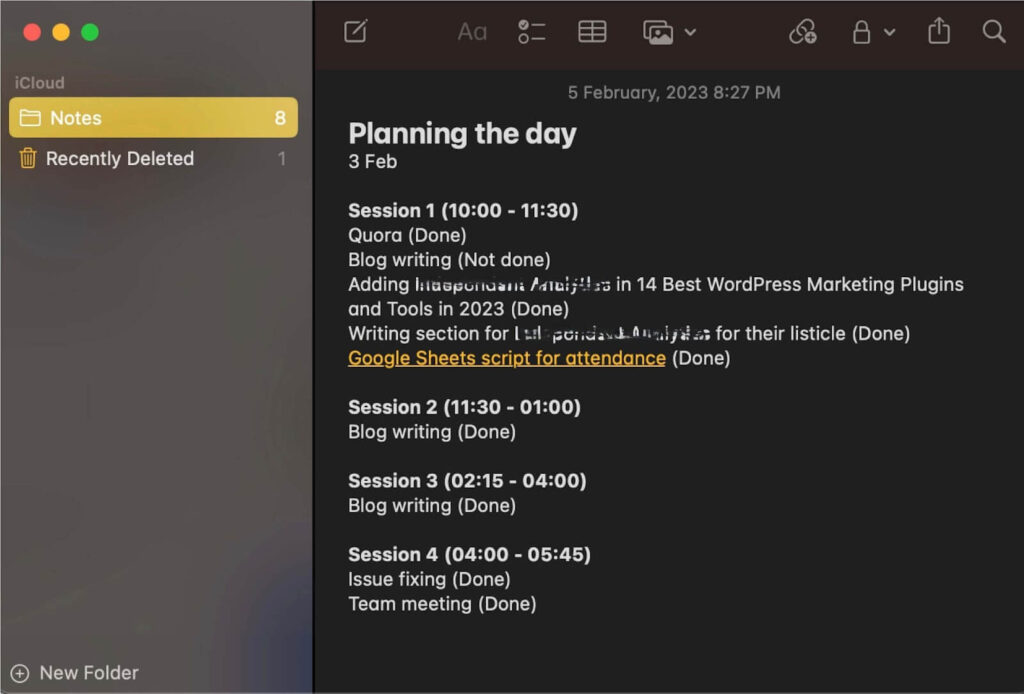Get More Done in Less Time with Time Blocked Scheduling

As a digital marketer at a software company, managing time effectively is crucial to accomplishing tasks and meeting deadlines. But in an environment where one is not micromanaged, just like me, it can be challenging to stay focused and productive.
Recently, I was searching for ways to make the most out of my work hours while also allowing me some ‘refreshment breaks.’ By dividing my workday into focused, uninterrupted blocks of time and dedicating each block to specific tasks, I was finally able to get more done in less time. I noticed a significant increase in my productivity and overall effectiveness. Now I want to share my story with you.
The method I started to follow has a fancy name – “Time-Blocked Scheduling.” It’s a simple, yet effective solution that can dramatically increase your productivity. So how do I utilize this method in my work?
What is Time Blocked Scheduling?
Everyday, after the stand-up meeting at the start of the day, I take a few minutes to plan out the rest of my day. I split up my 8-hour workday into four sessions, each lasting 1.5 to 2 hours, including some ‘off-desk’ time. This time-blocked scheduling approach allows me to tackle tasks with more intensity.
Here’s a quick breakdown of how it works: I write down the tasks I want to accomplish in each session and prioritize them based on their nature and level of importance. For instance, tasks that require a fresh mind or have high urgency get their places in the morning sessions.
During each session, I stay focused on the tasks at hand, and I make sure to take 5-minute breaks when needed. This helps me to recharge and refocus. Overall, I have found that time-blocked scheduling is particularly effective in a non-micromanaged environment because it provides structure and focus.
If you’re ready to take your productivity to the next level, you should also try the time-blocked scheduling approach and see the difference it can make in your work and life! Here’s how you can get started:
Step 1: Plan your day
Start each day with a clear plan in mind. At the start of the day, take a few minutes to write down the tasks you need to complete that day. Prioritize these tasks based on their level of importance and urgency.
Step 2: Block your time
Divide your workday into four to six focused blocks of time, each lasting between 1 to 2 hours, whatever suits your work. Dedicate each block to specific achievable tasks. Be sure to include time for breaks and off-desk time, to help you recharge.
Step 3: Stay focused
During each time-blocked session, stay focused on the task at hand. Eliminate distractions, such as email, social media, and phone notifications, and concentrate on getting the job done.
Step 4: Evaluate and adjust
At the end of each week, evaluate your progress and make any necessary adjustments to your time-blocked schedule. Use this time to reflect on what worked well and what you can improve for the upcoming week.

The benefits of time-blocked scheduling go beyond just getting more done in less time. This method can also have a profound impact on your career growth and development. Here’s how:
- Improved focus and concentration: By dedicating specific blocks of time to individual tasks, you can eliminate distractions and stay focused on what’s most important.
- Reduced stress and burnout: By giving yourself regular breaks and creating a structured schedule, you can prevent burnout and reduce stress levels.
- Better time management: With a clear plan in place, you can effectively manage your time and ensure that you’re making the most of each workday. This leads to increased efficiency, reduced stress, and improved work-life balance.
- Greater sense of control: Time-blocked scheduling gives you a sense of control over your day. You have a plan, and you know what you need to do to achieve your goals. This can lead to higher confidence and motivation.
So why not give time-blocked scheduling a try and see how it can help you achieve your goals and live a more balanced life! Optimize your workday with the magic of Time-Blocked Scheduling.
